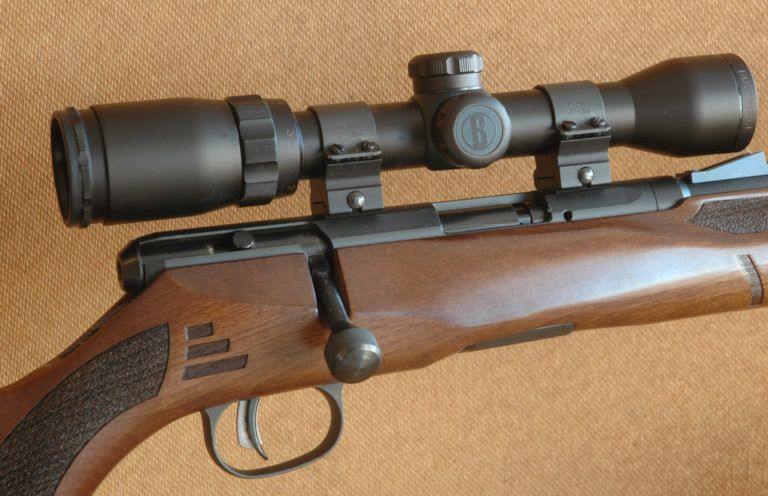
Savage’s B Series Hardwood has elements of fine rimfires now gone — and modern day improvements.
Why the B Series Hardwood is a top rimfire:
- Stocked in walnut-stained hardwood.
- 21-inch sporter barrel.
- Adjustable iron sights.
- Drilled and tapped for scope mounts.
- Adjustable AccuTrigger.
- Chambered in .22LR, .22 WMR and .17 HMR.
I sat on a fence rail, the rifle heavy, its walnut smooth in my hands. It smelled faintly of Hoppes. The barn squatted as if tired of supporting its roof. Boards rotted at the bottom splayed out, pressed by a manure pack so deep the sheep almost bumped their heads entering the doorway. A dirt-poor farmer tended this 80 acres. He showed me where to sit and promised he’d find some more ammo … but did I have enough for today?
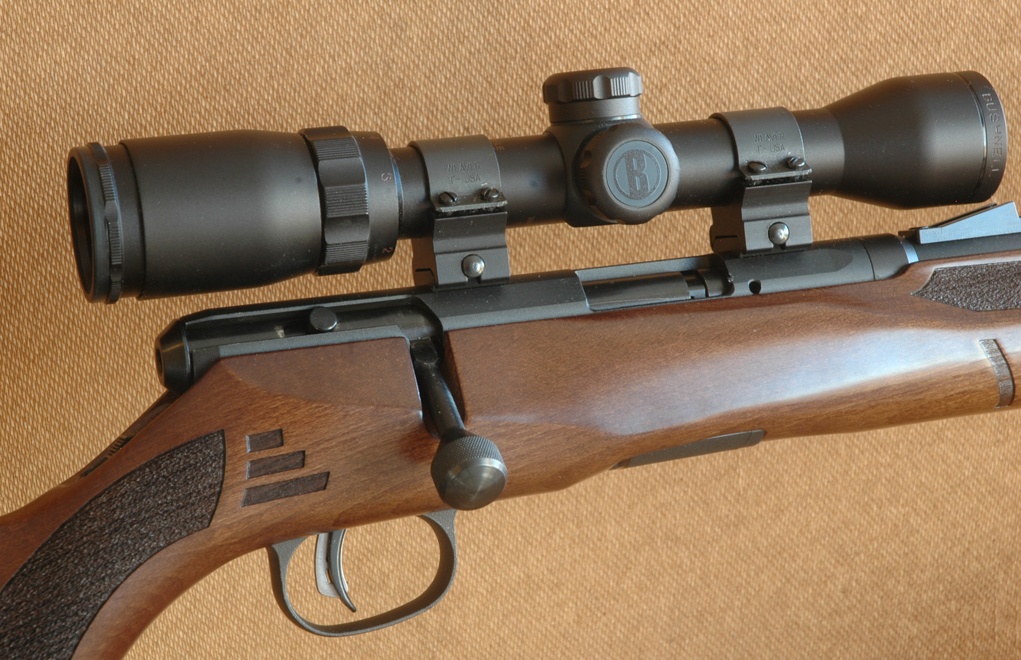
“Yes,” I said, though at 50 cents a box, it hadn’t come cheap. I slid a handful into the borrowed .22.
Tiny tunnels threaded the sheep pack, laced through the rotted boards and snaked through the apron of grass outside the pen. I watched them as carefully as later I would scan deer trails, and slots in the bush for Cape buffalo. A rat’s head in the tight, milky field of the Weaver J4 hiked my pulse as would bigger game through better glass in a life yet to spool out.
Rimfire rifles still bring shooting and hunting to youngsters. Quiet, accurate cartridges and recoil that barely nudges the clavicle gives marksmanship a chance. “You can’t shoot well if you pay attention to the bang,” observed the man who owned the .22. One day he handed me a long-barreled Navy Krag. I fumbled a .30-40 cartridge into the box and snapped it shut. I stroked the silk-smooth bolt, struggled to align the iron sights on the oil can in the furrow and staggered to the blast and the hammer-blow of the metal butt. The oil can didn’t move.
“Missing big and noisy is still missing,” he said. “Hitting with a .22 is better.”
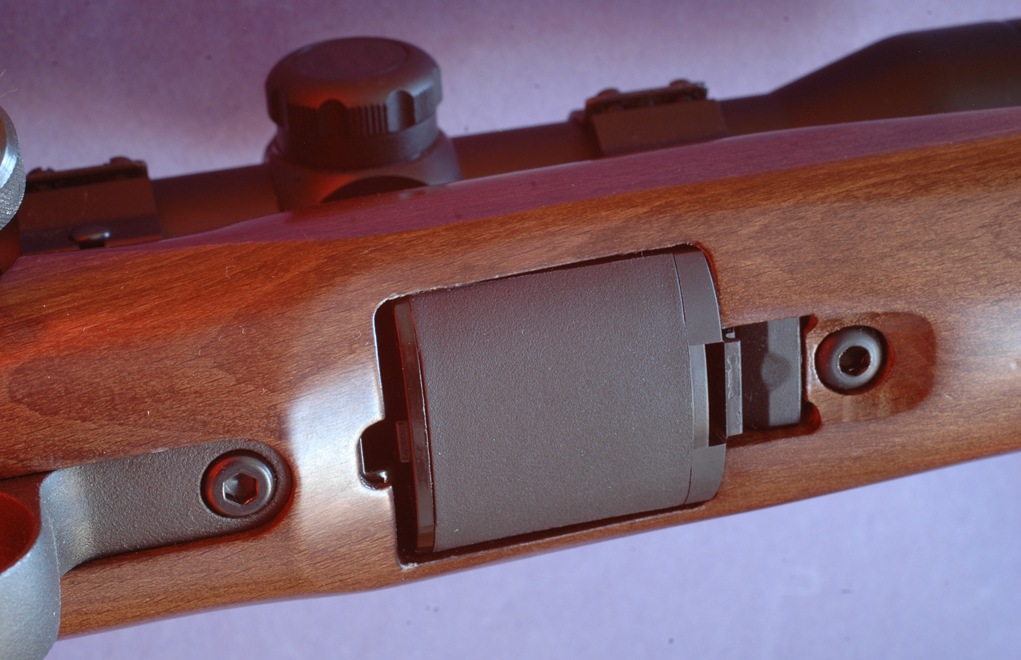
Alas, rifles like his lovely rimfire would soon be too costly to build. Someone bought the single-shot bolt-action in the rack beneath the moose in the local hardware — the one new .22 that, at $16.50, I thought I might someday afford. A simple, honest rifle of steel and walnut, it was replaced by tinny .22s with pot-metal and polymer parts, in crudely fitted, shoddily finished stocks. Gone was figured walnut. Iron sights became more expensive and, as scopes gained traction at market, went away.
While not sudden, changes in rimfire rifles were marked and irreversible. Used-gun racks that had once bristled with fine target rifles lost them. Classic models that had defined the market left it.
Craftsmanship Not Forgotten
Alas, these rifles are unlikely to return. If you recall 22-cent gasoline, you know these rifles I’m talking about — and perhaps mourn them. If you’re young, you’ve read of them. They’re now seldom loaned to boys picking off rats. But once in awhile, something comes along to remind us of them.
More On Rimfires:
- The .22 LR: Mini, Mighty And Many
- Best .22 Suppressor Choices To Mute Your Plinker
- The Quintessential 22 Pistol: The Colt Woodsman
- Collector’s Corner: The Browning SA-22
- The .22 LR For Self Defense: Good, Bad Or Crazy?
The Savage B Series Hardwood, new for 2018, is such a rifle — though its description didn’t spur me to jubilation. The catalog noted that B Series rifles have “… an ergonomically designed stock, higher comb, top tang safety and target-style vertical pistol grip.” The rotary magazine and AccuTrigger are also standard.
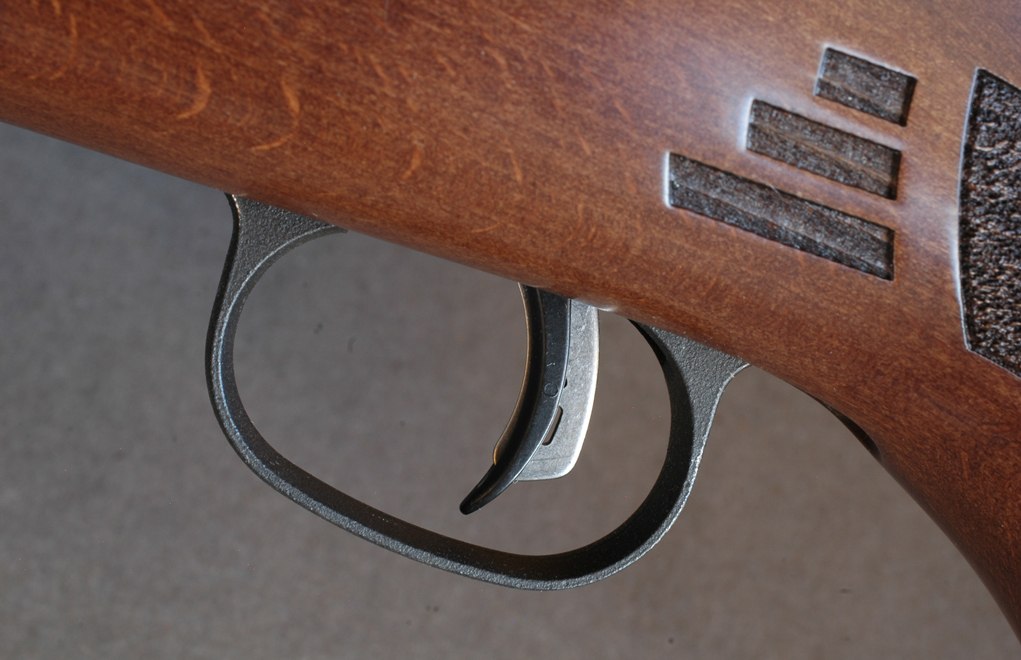
The B Series is not the B-Mag sextet bored for the bottleneck .17 WMR. It’s a more traditional family of rimfires, all seven members with identical bolt mechanisms and 10-shot spools. Six come in .22 Long Rifle, .22 Winchester Magnum Rimfire and .17 Hornady Magnum Rimfire, and one in .22 LR only.
B Series rifles won’t shame early post-war .22s — those that, if produced today, would cost many shekels indeed. These new Savages emphasize value and affordability, place performance over esthetics at prices that won’t give you the vapors. Six of the seven Bs wear black synthetic stocks. The outlier that caught my eye has real wood and open sights: true “yesterday” appeal. I requested a sample in .22 WMR.
At 5.5 pounds with a 21-inch barrel and 13.5-inch length of pull, the B Series Hardwood hardly pops from a spec sheet. In hand, this rifle gets better. The sample’s stock has a red-orange hue, not unlike aged French walnut. It’s very well finished, the pores filled, surface scratch- and ripple-free, details crisp. The grip lacks traditional curve but is long enough for big paws. Its slight swell (both sides) naturally and comfortably positions my palm. Generous comb fluting accepts the heel of my hand.
Stippling on the grip and high on the forend is well placed for secure but relaxed hold. Below a ridge midway along the forend, seven near-vertical grooves add purchase for your left palm — or for your mitt as you kick about the bush for cottontails on crisp December mornings.
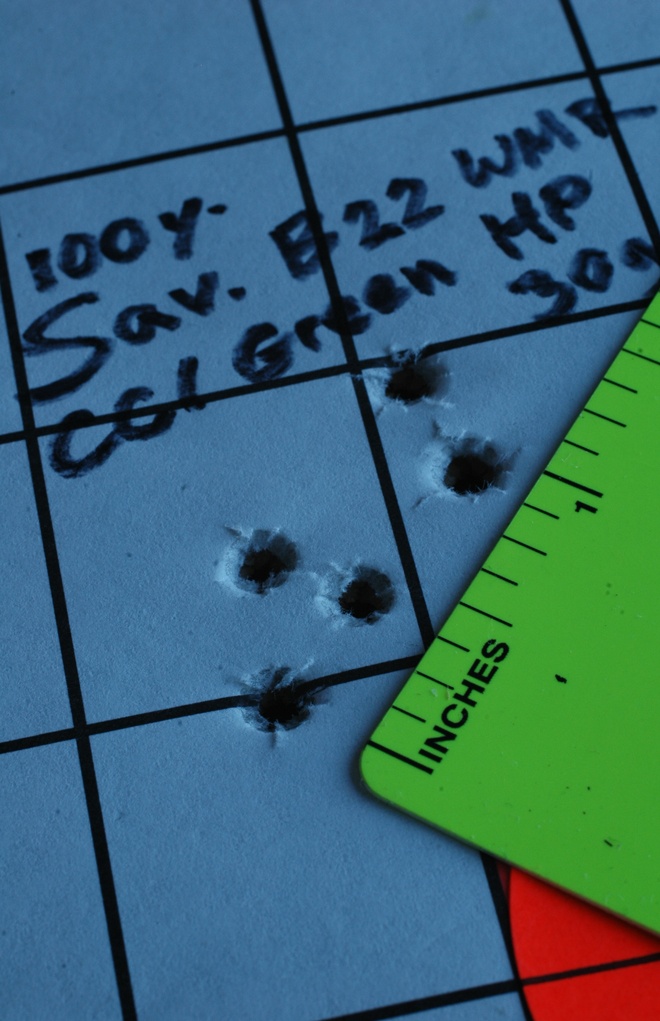
The relatively tall, straight comb instantly aligns my eye with the low-mounted Bushnell scope I attached to the rifle, but it’s not too high for iron-sight use. “Iron” is a misnomer here, because the open sights are not of steel. The front is a simple blade integral with a base secured to the barrel by two screws. The height-adjustable rear sight is also fastened by twin screws. Its top section can be removed to let a scope’s objective bell crouch low.
By the way, the tubular steel receiver is drilled and tapped for Weaver bases; it’s not grooved for clamp-on rings. Held to the stock by machine screws fore and aft of the rotary magazine, the bolt has dual extractors in its recessed face. The polymer 10-shot box with polymer spool fits flush and is secured by a recessed front latch that operates easily but with authority — and there’s no rattle. Feeding the spool isn’t like sliding cartridges into a tube; each must be pressed against a stubborn catch. Shucking cartridges into and out of the chamber, there’s also a hitch. And loading single cartridges through the port is only for small, nimble fingers. That said, in short order I got used to these minor balks.
The cast alloy guard, attached by the rear guard screw and, behind, by a wood screw, straddles the AccuTrigger, which Savage introduced in 2003 and now uses in most of its rifles. In the B Series, it also serves as bolt release. The two-position tang safety is handy and it’s quiet and crisp in operation, but it doesn’t lock the bolt. I like the bolt handle: Long and straight and positioned at a comfortable angle, it has a substantial cylindrical head finely machine-checkered on its circumference.

The B Series Hardwood balances well, its weight settling naturally between my hands. There’s a gunny, real-rifle feel to this .22. It leaps to cheek, steadies quickly and carries intuitively in the crook of my arm. Neither bulky nor too slender, the stock nestles naturally in my big hands. “Ergonomically” is one of many overused words that profligately waste syllables without clearly describing anything. But if there’s an “ergonomically fine” rimfire stock, Savage has approached it here. The B Series Hardwood is graced with QD swivel studs, so I can cinch up a Brownells Latigo sling for accurate fire from hunting positions.
Proof Through Plinking
At the range, I wound up giving the Savage more attention than went to the $4,000 big game rifle on the bench for accuracy trials. The .22 Magnum was just more fun! After zeroing at 35 steps and poking a .4-inch group, I trotted a target to 100. Bullets in a wide range of weights and styles drilled groups that would have sent prairie dogs dashing for their holes!
CCI 30-grain poly-tipped loads delivered the tightest knot: 1.1 inch. But other light-bullet options, like the Speer TNT load marketed by Federal, punched four of five holes inside an inch. Competitive loads from Hornady, Remington and Winchester yielded similar results. Federal’s 50-grain hollow-points at 1,530 fps could hardly match the 2,250-fps launch of 30-grain poly-tips, and struck lower. But groups hovered near 1.6 inches.
At ordinary rimfire ranges, those 50s may kill game like groundhogs and foxes more reliably than faster bullets that trump them in the charts. At 75 yards, it’s toting 175 ft.-lbs. of energy — about twice as much as a high-speed 38-grain .22 LR hollow-point!
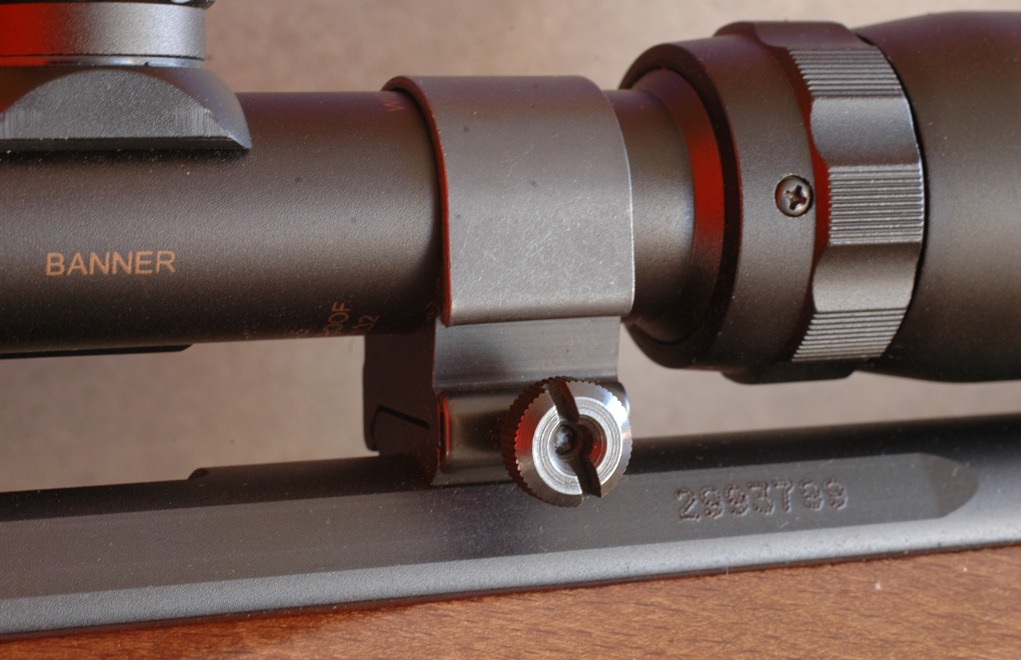
Long besmirched by reports of mediocre accuracy, the .22 WMR has benefited hugely from new bullets that not only snug groups on paper but upset with lethal effect in game. That said, the .17 HMR, on the WMR’s case, clearly nips tighter knots. And in competition, .22 LR match ammo has often blessed me with 0.25-inch five-shot groups in the 50-meter X-ring. Perhaps I chose the .22 WMR chambering here because it has struggled so long for the acceptance it will never have.
All told, Savage’s B Series Hardwood looks comfortable in my rack. Its feel and features earn it a place beside earlier rimfires now too costly to build. And in some ways, it’s superior. At a retail price of $439 for the .22 LR version and $459 for the .17 HMR and .22 WMR, it’s the most expensive of the clan. But then, without its hardwood stock and open sights, it would be just another .22.
For more information on the B Series Hardwood, please visit: www.savagearms.com
Editor's Note: This article originally appeared in the July 2018 issue of Gun Digest the Magazine.

Next Step: Get your FREE Printable Target Pack
Enhance your shooting precision with our 62 MOA Targets, perfect for rifles and handguns. Crafted in collaboration with Storm Tactical for accuracy and versatility.
Subscribe to the Gun Digest email newsletter and get your downloadable target pack sent straight to your inbox. Stay updated with the latest firearms info in the industry.

![Best Concealed Carry Guns In 2025 [Field Tested] Wilson Combat EDC X9S 1](https://gundigest.com/wp-content/uploads/Wilson-Combat-EDC-X9S-1-324x160.jpg)


![Best 9mm Carbine: Affordable PCCs [Tested] Ruger Carbine Shooting](https://gundigest.com/wp-content/uploads/Ruger-Carbine-Shooting-100x70.jpg)
![Best AR-15: Top Options Available Today [Field Tested] Harrington and Richardson PSA XM177E2 feature](https://gundigest.com/wp-content/uploads/Harrington-and-Richardson-PSA-XM177E2-feature-100x70.jpg)
